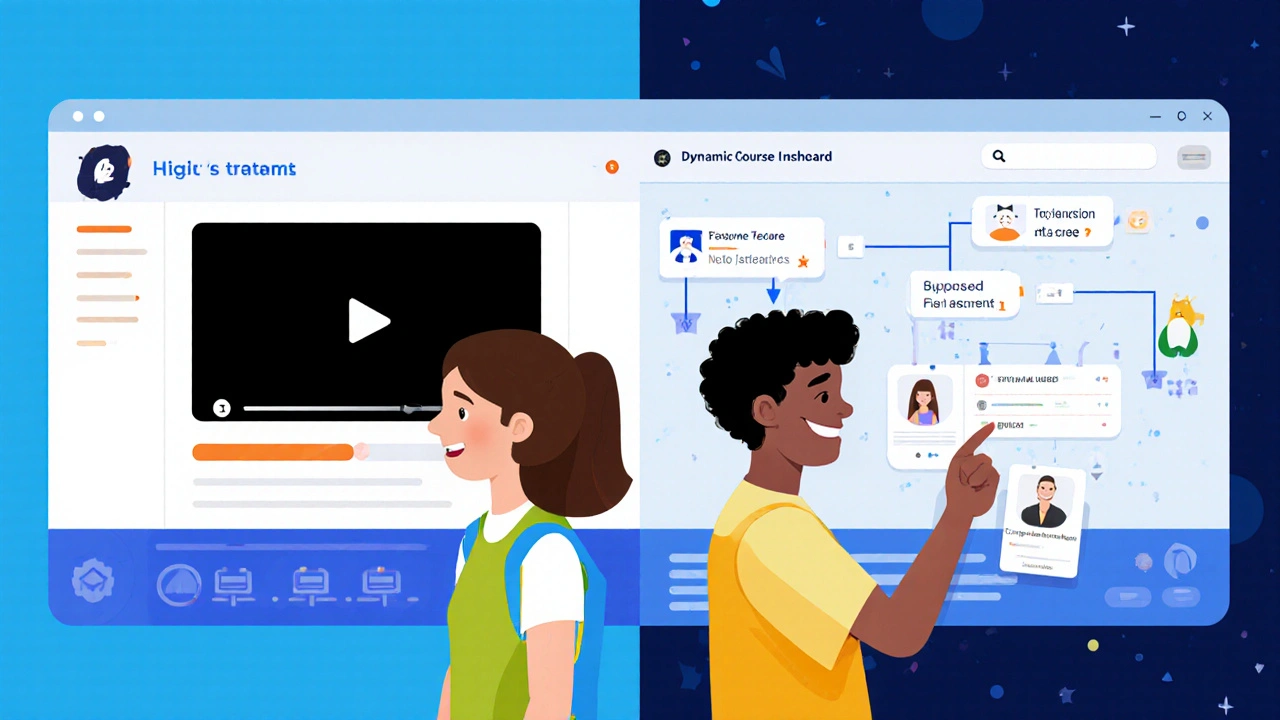Ever sat through an online course and felt like you were just going through the motions? You clicked through modules, watched videos, maybe even took notes-but deep down, you weren’t really invested. That’s not laziness. That’s bad design.
Great courses don’t just deliver content. They spark something inside you. They make you want to keep going, not because someone’s watching, but because you care. And that’s not magic. It’s motivational design-and it’s built on three simple, powerful forces: autonomy, mastery, and purpose.
Autonomy: You’re in Charge
Most courses treat learners like passengers. You’re given a fixed path: watch this, do that, take the quiz. No choices. No flexibility. And guess what? It kills motivation.
People don’t resist learning. They resist being controlled. When you give learners real choices-what to explore first, how to demonstrate their understanding, when to take a break-you tap into something deeper. A 2023 study from the University of Auckland tracked 1,200 online learners and found those with even small autonomy options (like choosing project topics or skipping non-essential videos) completed courses 47% more often than those without.
It’s not about giving learners total freedom. It’s about giving them control over the *how* and *when*. A course might require you to learn Python, but let you build a weather app, a game, or a budget tracker. That’s autonomy. It turns a task into a personal mission.
Think of it like cooking. You don’t need to follow a recipe exactly to make a good meal. You tweak ingredients, adjust heat, skip steps you’ve mastered. Courses should work the same way.
Mastery: The Thrill of Getting Better
Nothing sticks like the feeling of getting better at something. But most courses fail at showing progress. They dump information and expect you to magically absorb it.
Mastery isn’t about finishing a course. It’s about seeing your own growth. That means breaking big skills into tiny, measurable steps. Instead of “Learn Web Development,” a better structure is: “Build your first button → Add a hover effect → Link two pages → Fix broken links.” Each step gives a win.
And feedback? It has to be immediate and specific. A simple “Correct!” or “Try again” isn’t enough. Tell learners *why* they got it right or wrong. “You used the right CSS selector, but forgot to close the bracket-that’s why the button didn’t show up.”
One design trick that works: progress bars with skill icons. Not just “25% complete,” but “You’ve unlocked: CSS Basics → JavaScript Functions → Responsive Layout.” It turns learning into a game you’re winning, not just surviving.
And here’s the secret: mastery doesn’t mean perfection. It means you’re improving. A learner who struggles but keeps trying feels more engaged than one who breezes through without challenge.
Purpose: Why This Matters to You
People don’t care about your course objectives. They care about their own lives.
Ask yourself: Why would someone spend 10 hours on this? What’s in it for them? If the answer is “to pass the exam,” that’s not enough. But if the answer is “to get promoted,” “to start a side business,” or “to help my kid with homework,” that’s powerful.
Top courses connect every module to real life. Not just “This is about data analysis,” but “This skill lets you spot trends in your family’s spending and save $500 a year.” Or: “You’ll learn how to use this tool to reduce your team’s weekly meetings by 3 hours.”
One course designer in Wellington started each lesson with a 30-second video of someone who used the skill-like a single mom who landed a remote job after finishing the course, or a teacher who used the tool to help struggling students. Results? Completion rates jumped 63%.
Purpose isn’t about grand missions. It’s about personal relevance. If learners can’t answer “Why am I doing this?” in their own words, the course is missing the point.

Putting It All Together: Real Course Examples
Here’s how three real courses nail all three elements:
- “Build Your First App” (Codecademy): Learners choose their app idea (autonomy), unlock skills one by one with instant code feedback (mastery), and see their app go live on their phone (purpose).
- “Creative Writing for Everyday Life” (Coursera): Students pick their own prompts (autonomy), get peer feedback on drafts (mastery), and write a letter to their future self (purpose).
- “Financial Literacy for Young Adults” (Khan Academy): Learners track their own spending (autonomy), see their savings grow over time (mastery), and learn to avoid debt traps that hurt their future (purpose).
Notice the pattern? No forced lectures. No one-size-fits-all quizzes. Just clear paths to real outcomes.
What Doesn’t Work
Bad motivational design looks like:
- Forcing everyone to watch the same 45-minute video
- Only offering one way to submit an assignment
- Using vague goals like “understand the topic”
- Not showing how skills connect to life outside the course
These aren’t mistakes. They’re design failures. They treat learners as data points, not humans.
One university tried to “improve” their course by adding more videos. Completion dropped 30%. Why? They took away choice. They didn’t explain why it mattered. And they didn’t let learners feel progress.

How to Build It Yourself
If you’re designing a course, here’s a simple checklist:
- Autonomy: Can learners choose their path, project, or pace? If not, add one choice.
- Mastery: Are skills broken into small wins? Is feedback clear and immediate? If not, rewrite the feedback system.
- Purpose: Can a learner explain, in their own words, why this matters to them? If not, add a real-life example or story at the start of each module.
You don’t need fancy tech. You need empathy. Ask: “What would make *me* stick with this?”
Why This Matters Now
In 2025, attention is the scarcest resource. People aren’t short on time-they’re short on reasons to care. Courses that just dump content are dying. Those that build autonomy, mastery, and purpose are thriving.
Companies are hiring based on skills, not certificates. Learners want to know: “Will this change my life?” If your course can’t answer that, it’s just noise.
Autonomy, mastery, and purpose aren’t fancy theories. They’re human truths. And when you design with them, you’re not just teaching. You’re sparking change.


Comments
Sandeepan Gupta
Autonomy isn't just a buzzword-it's the difference between someone finishing a course and someone actually learning. I've seen students in my tutoring sessions zone out when forced into rigid structures. But give them one choice-like picking a project topic-and suddenly they're staying up late to debug code. It's not about freedom for freedom's sake. It's about ownership.
Tarun nahata
This is the kind of insight that turns boring courses into life-changing experiences. Mastery isn't about checking boxes-it's about that electric buzz when you finally fix that bug after three hours. Purpose? That's the whisper in your head saying 'This matters.' Stop designing for compliance. Start designing for connection.
Aryan Jain
They don't want you to learn. They want you addicted to the system. Autonomy? Mastery? Purpose? All marketing fluff to keep you scrolling. Real learning happens when you're forced to figure it out alone-no feedback loops, no progress bars, no fake wins. This whole framework is just another corporate cage with glitter on it.
Noel Dhiraj
I've taught online courses for over a decade and this hits harder than any training manual I've ever seen. The moment I started letting learners pick their project themes, completion rates shot up. No magic. Just respect. People don't need more content. They need to feel like their time matters. That's it.
vidhi patel
There are multiple grammatical errors in the term 'Autonomy, Mastery, and Purpose'-it should be 'Autonomy, Mastery, and Purpose' with proper serial punctuation. Additionally, 'unlocked skills one by one' is a vague and unprofessional phrasing. This article lacks academic rigor and should be revised before being presented as authoritative.
Priti Yadav
They're watching you. Every click, every pause, every time you skip a video. That 'progress bar'? It's not helping you-it's feeding data to some algorithm in Silicon Valley. They don't care if you learn. They care if you stay hooked. Autonomy? It's a trap. They let you choose so you think you're free.
Ajit Kumar
While the general sentiment of this article is laudable, the structural presentation of the three principles lacks systematic coherence. The assertion that 'people don't resist learning; they resist being controlled' is an oversimplification that ignores cognitive load theory and the role of scaffolding in novice learners. Furthermore, the claim that small autonomy options lead to a 47% increase in completion rates is misleading without specifying the control variables, sample variance, or statistical significance of the cited 2023 study from the University of Auckland, which, to my knowledge, has not been peer-reviewed or published in any indexed journal.
Diwakar Pandey
I used to think more videos = better learning. Then I watched a student cry because they felt lost in a 12-module course with no way to skip ahead. I cut the videos in half, added three choices per module, and now people actually finish. It’s not about being clever. It’s about being human.
Geet Ramchandani
Let me guess-this is the same garbage that got pushed by EdTech startups during the pandemic. You think giving people a choice between building a weather app or a budget tracker makes them 'engaged'? That’s not motivation-that’s distraction. Most people don’t want to 'learn' anything. They want a certificate to show their boss. This whole framework is just corporate therapy dressed up as pedagogy.
Pooja Kalra
Autonomy implies responsibility. Mastery implies failure. Purpose implies sacrifice. We’ve forgotten that learning is not a reward system. It is a confrontation-with our limits, our fears, our laziness. These three forces are not tools. They are illusions we use to make the grind feel meaningful. But meaning is not designed. It is endured.
Sumit SM
Let’s be real: autonomy without structure is chaos. Mastery without feedback is frustration. Purpose without context is fantasy. The magic isn’t in the three principles-it’s in the balance. Too much choice? Overwhelm. Too little feedback? Abandonment. Too vague a purpose? Disengagement. This isn’t a checklist. It’s a dance. And most course designers are still learning the steps.
Jen Deschambeault
I teach in Canada and this is exactly what we’ve been pushing in our adult ed programs. One learner told me, 'I didn’t think I could code until I built a tracker for my kid’s allowance.' That’s purpose. Not a certificate. Not a grade. A real, quiet moment of 'I did this.' That’s what sticks.
Kayla Ellsworth
Wow. Another article that treats learners like toddlers who need stickers to behave. The real problem? Most courses are designed by people who’ve never actually taught anything. They read a blog, copy-paste 'autonomy, mastery, purpose,' slap on a progress bar, and call it innovation. Meanwhile, the learners are just trying to survive another Zoom lecture.